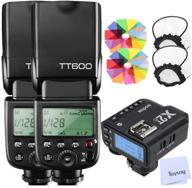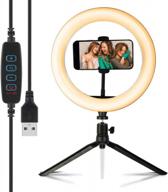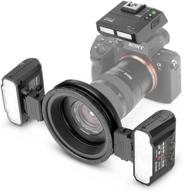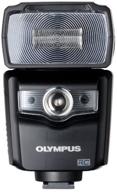
Review on Nissin NDMG8000C MG8000 For Canon by Gene Taylor

Nissin NDMG8000N for Nikon DSLRs: Rugged, Innovative and Fast
Electronic camera flashes are not new, but some have become milestones over the years. For those of us shooting in the 1970s, one of the most innovative of these flashes was the classic Vivitar 283 flash, featuring an autothyristor, a reflective head, a detachable sensor that could be used with a sensor extension cable, and more. It was a great product, but that was then and that is now; more on that later. The Nissin NDMG8000N Extreme Heat Fighting Tube for Nikon has piqued my curiosity since I saw it win the 2013 TIPA (Technical Picture Press Association) award for "Best Portable Lighting System" in a fairly crowded product field in May. My outdated Nikon SB-600 flash has been in service for almost a decade and has had some minor issues lately so it was time to consider an upgrade while this flash was being serviced to be picked up locally. This flash is available for both Canon and Nikon DSLRs, although this review focuses on the flash for Nikon models. Coming to the subjective points, here are my main observations and then a closer look at this flash: ◆ Pros: + Top flash performance; fast recharge time and stable color temperature (about 5600K) + quartz flash; reduces overheating problems, repeats full flash without overheating + Extremely powerful; GN 60/198 105 mm (ISO 100 m/ft)+ Fully functional control panel; Color-coding, simple operation at a glance + Control panel automatically rotates to horizontal and vertical position + Unique auxiliary/fill-in flash under the main head; gives fill light with indirect main flash + full TTL metering; Nikon i-TTL+ modes supported High compatibility; D2 to D7100 covers most Nikon+ SLR models Excellent build quality; solid in all respects + USB service port; Firmware can be upgraded if needed + flash diffuser included; fits into the base of the included soft case + 2-year US warranty; limited etc.◆ Cons: - Consumes batteries as expected; more on that later◆ First Impressions: This Nissin NDMG8000N comes in a staid gray box with the key features listed on the outside. Inside you'll find the following: ▪ Flash MG8000 ▪ External flash diffuser ▪ Soft case with diffuser section ▪ Small flash stand with tripod screw on base ▪ Instruction manual It's immediately apparent that this is a well-made flash. Unity, and everything has a sense of quality and precision. The main head rotates without sagging and the vertical rebound angles are precisely set. This flash uses four AA alkaline or NiMH rechargeable batteries, so for a first run I charged it with several freshly charged 2500mah (typical) / 2400mah (minimum) eneloop XX pre-charged Ni-MH batteries. The trial version was interesting in that it had to learn all the features and it was only on my Nikon D5000 as it has an external battery as I was about to do a little stress test. Processing was quick regardless of the mode used, from auto to i-TTL to manual. It became apparent that it would be wise to have spare batteries on hand as I was getting anywhere from 150 to 350 flashes in a set depending on the mode I was using. Your results may vary depending on the batteries and flash mode used. ◆ In action: The best way to explain this Nissin MG8000 flash is to start with the unique control panel on the back of the unit, as this is where the real functionality lies. This color display rotates automatically, so you can work in both horizontal (landscape) and vertical (portrait) positions, which is very convenient. Accessed via an intuitive multi-function selector on the back of the unit, the different operating modes are color coded for even easier use. This is a brief description of the different modes found on this flash: Full Auto (Green) This is the default mode when the flash is on and for many it is most commonly used for general photographic purposes. . It works when the camera is set to one of the following modes: Auto (Full Auto), P (Program), S (Shutter Priority), A (Aperture Priority), and M (Manual). Depending on your Nikon model, it also works with Night, Macro, Sports, Kids, Scene and Portrait settings. Flash output is automatically adjusted by the camera, and when the focal length of the camera lens changes, the flash fires instantly, adjusting the light source to the correct angle of illumination. The focal length of the lens is also shown on the flash indicator screen and ranges from 24mm to 105mm (in 35mm full frame). Programmed TTL (blue) As with Nikon's i-TTL flash control system, flash output is automatically controlled by the camera for the most appropriate exposure. You can soften the flash, make it quieter, or illuminate the subject more or less without changing the lighting effect of the environment or background. TTL flash exposure compensation is 19 levels in 0.3 Ev increments from -3.0 to +3.0 Ev. It works in the Auto, P, S, A and M modes set on the camera. Manual setting mode (brown) When the camera mode is set to A or M, the flash output can be combined with the aperture value set on the camera with 22 different output settings manually adjusted to the most suitable power. Depending on your needs, it ranges from full power to 1/128 power in 1/3 step increments. Repeat Flash Mode (Red) One of the most creative settings, this is used when the camera mode is set to M and allows you to use repeated flashes or flash sequences. In this mode, the power level, frequency and number of flashes are set on the flash in advance. The uncontrolled manual power is provided in 5 levels, from 1/8 to 1/128 power, and the flash time can be adjusted from 1 to 90 times. Wireless Remote Flash Mode (Yellow) When you set the camera mode to Auto, P, S, A, or M, this option allows you to use two options for a remote wireless flash control system. It's too complicated to explain in a review here, and the manual can be downloaded from the Nissin website. In short, there is a wide range of flash models and cameras that can be used for pairing as master and remote flashes. Custom Settings Mode (Purple) This option allows you to customize the MG8000 in a variety of ways. For example, the auto-off time can be selected from 10 to 60 minutes. The display panel can be turned off to save batteries or when not needed. The distance reading can be set in feet or meters here and if a firmware update service is ever required it is available here. And user setting can be reset to factory default here. ◆ Other Observations: The external flash diffuser proved invaluable, especially when used in bounce mode. The small fill flash, located just below the main flash head, worked great as a lower powered "main" light when used in full auto mode (green setting), which I often reverted to in most shooting situations. In terms of i-TTL functionality, I used an MG8000 flash with a Vivitar FCNIK flash cable for Nikon digital cameras, as well as a Nikon SC-28 TTL 9ft. Removed the cable and it worked as expected. I have used this flash with my (now obsolete) Nikon D200, D7100, the aforementioned D5000 and a rental Nikon D800. The flash worked equally well on DX and FX DSLRs with a variety of lenses, and several adjustments were required to achieve the desired exposure. The best comparison I can make is that it was like a Nikon SB-910 flash but with a better user friendly display panel and a small built in fill flash. The Nissin MG8000 also comes with a two-year warranty, while the Nikon SB-910 has a one-year warranty. As mentioned, this flash works like batteries, so I grabbed a pair of Nissin NDBM01 battery boxes for the Di 466 and Di 866 flash (NDBM-01). This battery magazine is the same as the Nissin Di866 Mark II and Di466 flashes and offers the convenience of inserting all four AA batteries in the same direction, allowing you to correctly use the elements even in low light conditions. They work well with quick swaps and also have a cover so the batteries are protected when not in use. For those who need more power, check out the Nissin Power Pack PS300, which offers high-speed charging and faster recharging. I haven't tried this as the battery magazines suit my needs quite well. ◆ Cost: If we look at the cost of this unit and other Nikon professional flashes, it seems like a good deal considering the overall performance. but value is relative. Looking back at the Vivitar 283 from the early 70's, I remember that it was around $100 back then. Using several online money calculators and comparing 1973 and 2013, they came up with between $525 and $540 by calculating the value of the dollar using the CPI (Consumer Price Index) for December of the previous year. All calculations are estimates but given what this Nissin MG8000 flash has to offer it's a pretty good buy given its great specs. in terms of overall quality and performance. Whether you're shooting news, sports or events and need fast charging and reliability, this MG8000 will put out plenty of light fast. Even with full power from just four AA cells, it can be quickly recharged. Simply put, this is a recommended 5-star product that is reliable, innovative and fast. 10/16/2013
- 24-104mm Auto-Zoom Head
- No Instructions
New products
Comments (0)
Top products in 🚨 Flashes


14 Review

10'' LED Ring Light With Tripod Stand & Phone Holder For Live Streaming/Photography, Dimmable Selfie Makeup Video Recording Light With 3 Modes & 10 Brightness Levels

13 Review

Wireless Macro Twin Lite Flash - Meike MK-MT24S for Sony MI Hot Shoe 📷 Mount Mirrorless Cameras such as A9, A7III, A7RIII, A6400, A6300, A6000, A6500, A6600 and more

11 Review

Enhance Your Photography with the Olympus FL-600R Wireless Flash

9 Review





